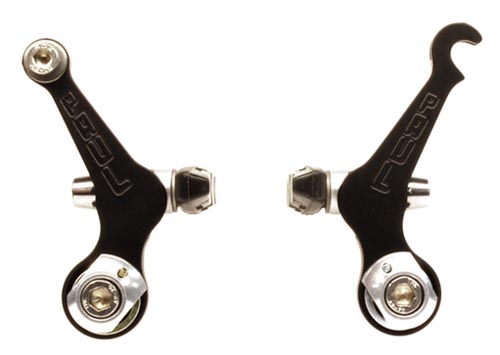For cyclocross racers and touring cyclists who don’t want disc brakes — but want more braking power — there’s a solution that wasn’t just released at last year’s Interbike. Nope, the answer has been here more than a decade: Brakes from Paul Component Engineering.
They’re from a pre-V-brake era, the ’90s, back when any bike worth riding cost more than your first car and the trickle down of technology in mountain biking was just a pipe dream. Back then anyone with a machine shop had a mountain bike component company, and anodized turquoise and purple — sometimes on the same bike! — reigned supreme. Back then, brake power was surprisingly impressive, too.
Leading the charge were units like Paul’s Neo-Retro, which the company proudly admits on its website is “a blatant rip-off of the famous Mafac Tandem brake.” Long arms that stick straight out for the highest leverage possible and a high straddle wire for mud clearance are touted features.

But Paul’s didn’t stop with just a rip-off for its latest incarnation. The company added modern adjustment features like V-brake-style pads with easy to use spherical-style setting washers. This helps with adjusting the toe-in and replacement of pads.
In fact, they are incredibly easy to install. It should take an intermediate mechanic about 15 minutes, give or take. It took me about 10 minutes to install ‘em on the front-end of a Litespeed Blue Ridge bike.
One of the biggest lure of these 100 gram units, which cost between $103 and $113 per wheel depending on finish, is their warning. “These are very powerful brakes, and have a tendency to over power thin tubed frames (in any material).”

My Litespeed bike had a rear rack and Paul’s warns on its website that “the arms stick out a lot! For smaller frames, bikes with bags, and people with HUGE feet there can be some interference problems, in which case the Touring Canti might be more appropriate.”
With shorter arms and about 10 percent less power, the company advertises the Touring Canti as having all the same adjustment capability and pivot system as the Neo Retro, but with arms that angle up and out of the way. They can also outpower thinner seat-tubes, the company warns.
The Touring Canti brakes are a breeze to install as well. They are priced at just over $100/wheel. I put these on in about 10 minutes, and they performed as advertised by not interfering with panniers while providing plenty of power.
In about a month of testing I rode this setup on mountain roads, in the dirt and even on the Playa at Burning Man where I learned the hard way that nice rigs with nice brakes should be locked up, even in broad daylight and within eyeshot. Ugh. www.paulcomp.com
—Stephen Krcmar got his first job in the wild, lucrative world of bicycles in the early 90s as an intern at Gravity Research, a family-run brake manufacturer in Yorktown, New York.





